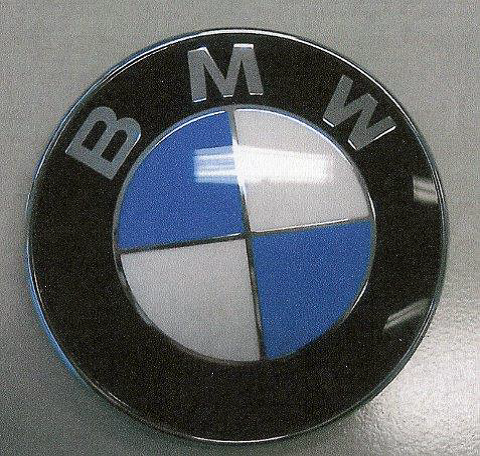

BMW’s trade mark rights infringed by spare parts business
September 18, 2015
Categories:
Post date:
18. September 2015 - 12:40
The German Federal Court of Justice ruled on two aspects of trade mark law in its recent decision. The conclusion of the Court was, firstly, that a mark which is registered in black and white is not identical with a mark in colour unless the difference is insignificant. Secondly, the production of plaques consisting merely of a car producer’s trade mark falls within the monopoly granted by the exclusivity right of the trade mark proprietor. (Judgement: I Z 153/14 of 12 March 2015)
vs.
Background of the case and subject matter
The applicant, the well-known German car manufacturer, Bayerische Motoren Werke AG (BMW), is the proprietor of the registered German word/figurative mark No. 39644028 (on the left above). The mark is registered in black and white and is protected for, among other goods, plaques.
The defendant marketed spare parts for cars, both nationally and internationally. Among these parts were plaques (on the right above) sold by the defendant under the product description Repl. 5114 8 132 375. These plaques can be attached to the bonnet or tailgate of the cars produced by BMW.
BMW considered the plaques to be infringing their trade mark rights. The defendant, on the other hand, was of the opinion that it had a permissible spare part business, in which the use of brands was forcibly allowed. The Regional Court of Hamburg ruled in favour of the applicant and demanded the defendant to provide information on the use of the mark, to refrain from further sales of the plaques and to reimburse BMW’s damages caused by the defendant’s use (Judgement of March 22, 2011 312 O 366/10). The defendant appealed the judgement, but the Higher Regional Court of Hamburg dismissed the appeal and upheld the previous decision (Judgement of June 5, 2014 5 U 106/11). This decision was appealed to the German Federal Court of Justice.
The Decision of the German Federal Court of Justice (BGH)
The applicant successfully argued that the defendant’s plaques infringed BMW’s trade mark rights and the Court ruled that the applicant was entitled to the claims as ruled in the previous instances. However, the infringement could not be based on the German Trade Mark Act Sec. § 14 (2) No. 1 (which is implementing Art. 5 (1) of the Community Trade Mark Directive).
The German Federal Court of Justice stated that for the assessment of whether a trade mark infringement is present within the meaning of § 14 (2) No. 1 Trade Mark Act, only the trade mark registration and not the specific use of the trade mark on the goods are taken into consideration. BMW had only brought forward the mark which was registered in black and white, without relying on a coloured version.
The Court referred to a ruling of the European Court of Justice (LTJ Diffusion) where it was stated that “a sign is identical with a trade mark only where it reproduces, without any modifications or addition, all the elements constituting the trade mark or where, viewed as a whole, it contains differences so insignificant that they may go unnoticed by an average consumer”. An insignificant difference between two marks is a difference that a reasonably observant consumer will perceive only upon side by side examination of the marks.
Thus, the German Federal Court of Justice stated that a sign which is registered in black and white is not identical with a coloured version of the same sign, unless the difference in colour is insignificant. The overall impression of the plaque in question was predominantly characterized by the blue colour of two of the four central areas of the character, and the Court did therefore not find the plaque to be identical to the applicant’s protected mark. It was found to be significant variations in the colour schemes between the two marks.
This assessment corresponds to the controversial “Common Communication on the Common Practice on the Scope of Protection of Black and White Marks” of 15 April 2014, presented by the Office for Harmonisation in the Internal Market and national trade mark offices. The Communication does not determine the issue of identical signs for infringement cases, but, the German Federal Court made, through its ruling, sure that the question of identity is to be assessed according to the same principles for relative grounds for refusal and infringement issues.
Subsequently, the German Federal Court based the infringement of BMW’s trade mark rights on the likelihood of confusion under Sec. § 14 (2) No. 2 of the German Trade Mark Act. The goods in question were identical and the earlier mark enjoyed a high level of distinctiveness. The variations in colour schemes were not sufficient to prevent the finding of a high similarity of the signs.
Furthermore, the German Federal Court acknowledged that spare parts can only be sold if they include or can be equipped with the BMW plaque. In this case, the abbreviation “Repl” on the backside of the goods was not sufficient to indicate the intended purpose of the good as a spare part and thus engage the derogation for spare part businesses set out in Sec. § 23 No. 3 of the German Trade Mark Act. The majority of customers would not by this understand that the goods are not those of the trade mark proprietor’s. The Court ruled that the production of plaques consisting merely of the car producer’s trade mark itself falls within the monopoly granted by the exclusivity right of the trade mark proprietor.
Click here to read the full judgement of the German Federal Court of Justice.
Related
- "Neuschwanstein" is not a trademark!
- 1 December 2017: Madrid Monitor takes its place as the one and only tool for tracking international trademarks
- 1 January 2020 - Changes in Classifications - Trademarks, Designs, Patents and Utility Models
- 100th Anniversary of Bavaria (Germany) - A glance at trademarks, start-ups, innovation & events
- 10th Anniversary Edition - 10 Things to Know about LexDellmeier - Past, Present & Future
- 14 June 2013: Munich Patent Law Conference - Calculating Damages in Patent Infringement Cases
- 15 Top Brands - Interactive Brand Rating - Years 2000 - 2018
- 15 Years LexDellmeier - 2024 New Year Wishes
- 2014: Statistics for Community Trademarks
- 2024 World IP Day - Building Our Common Future with Innovation and Creativity

